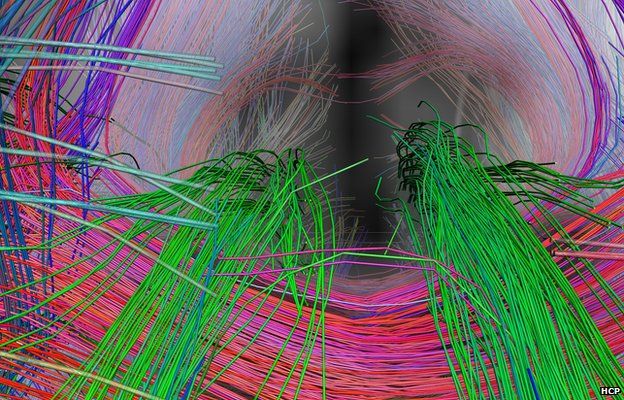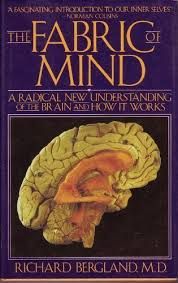Neuroscience
What Is the Human Connectome Project? Why Should You Care?
The Human Connectome Project will transform our knowledge of the mind and brain.
Posted November 27, 2013

A side view of the brain's left hemisphere including the cerebrum and cerebellum.
The Human Connectome Project (HCP) plans to do for the brain what the Human Genome Project (HGP) did for genetics. Mapping the human brain is one of the great scientific challenges of the 21st century. The Human Connectome Project is mapping the connections between neural pathways that underlie brain function and behavior.
The findings from HCP will help transform our understanding of the human mind and brain in health, and in disease. HCP will ultimately yield invaluable information about brain connectivity, its relationship to behavior, and the contributions of genetic and environmental factors on individual differences in brain circuitry and behavior.
In September 2010, the National Institutes of Health (NIH) announced that it would award two HCP grants: $30 million over five years to a consortium led by Washington University in Saint Louis and the University of Minnesota, and $8.5 million over three years to a consortium led by Harvard University, Massachusetts General Hospital (MGH) and the University of California Los Angeles (UCLA).
What Is the Human Connectome Project?
The goal of the Human Connectome Project is to build a "network map" that will shed light on the anatomical and functional connectivity within the healthy human brain, as well as to produce a body of data that will facilitate research into brain disorders such as dyslexia, autism, Alzheimer's disease, and schizophrenia.
The connectivity of brain regions that are attached to one another is referred to as structural connectivity. Regions of the brain do not have to be structurally connected to have functional connectivity. Structural connection does not automatically signify a functional link. The Human Connectome Project is building a neural connectivity map that will shed light on the anatomical as well as functional connectivity within the healthy human brain.

The large red circular bundle is a part of the corpus callosum, which connects the left and right hemispheres.
“Connectome” refers to the complex interconnected network of neurons (nerve cells) in your brain. The objective of studying connectomes—also known as connectomics—is to decipher the neural networks that generate thoughts, feelings, and behaviors. The foundation of human cognition lies in the dynamic patterns and interactions shaped by the connectome.
Charting the human connectome in healthy children and adults will help researchers discover the role that brain circuitry plays during development and aging as well as inform our understanding of numerous brain disorders, cognitive decline, and mental illnesses.
Why Is the Human Connectome Project Important?
Arthur Toga, director of the UCLA Laboratory of Neuro Imaging, who is one of the principal investigators of HCP said, “Historically, we focused on mapping brain structure, but we haven’t spent a lot of time looking at how those structures are wired together, what the connections between them are, and how they function.”
Neural information travels through white matter from one area of the brain to another. Any disruption or abnormality in the white matter pathways can lead to disease. "The study of white matter can therefore help researchers and neurologists understand disease," said Paul Thompson, professor of neurology at the UCLA Laboratory of Neuro Imaging.
“Many people with serious brain illnesses have some abnormality in the connections of the brain,” Thompson said. “Until recently, researchers did not have the scanning methods to detect or map the connections in the brain,” Thompson added.
HCP is a partnership with Harvard's Massachusetts General Hospital in Boston. MGH conducts brain scans on healthy patients and sends the results to UCLA, where researchers like Jack Van Horn, a UCLA neurologist, apply complex algorithms to the raw brain scan data so they can generate the maps in a healthy patient’s brain.
"By mapping the white matter networks in the brain for healthy patients, researchers at UCLA can understand what the normal scan results look like," Van Horn said. The scientists then compare brain scans of patients with neurodegenerative diseases with those of healthy patients to understand exactly how neurological diseases affect the brain, he added.

The brain pathways of the left and right hemispheres as seen from above.
The HCP is collecting behavioral measures of a range of motor, sensory, cognitive, and emotional processes that will delineate a core set of functions relevant to understanding the relationship between brain connectivity and human behavior. In addition, the HCP is using task-fMRI (tfMRI) to help delineate the relationships between individual differences in the neurobiological substrates of mental processing and both functional and structural connectivity.
The HCP traces the main neural pathways that link the roughly 500 major regions in the brain, bringing to light in vivid color how biological circuitry underlies our mental functions. “Until now we’ve had only a fragmentary understanding of who is talking to whom in the brain,” says David Van Essen of Washington University in St. Louis, another HCP principal investigators.
Researchers hope to use the HCP data to explore how a person’s brain connectivity relates to his or her mental abilities, including memory, self-control, and decision making. Van Essen believes that individual connectome mapping could eventually lead to improved treatment of mental disorders.
In the future, instead of just offering a generalized diagnosis for mental disorders like autism, dyslexia, schizophrenia etc. a neurologist could observe abnormal brain circuitry and pinpoint exactly what is atypical and then fine-tune a personalized regimen of therapy and/or medication.
Scientists have discovered many links between: increases, decreases, and disruptions of brain connectivity to a wide range of diseases and mental disorders. The list includes:
- Alzheimer’s Disease (Decreased connectivity and Hippocampus changes)
- Anxiety (Increased connectivity and Amydgala changes)
- Attention-Deficit Hyperactiviy Disorder (Altered connectivity)
- Autism (Altered connectivity and Cerebellum, Thalamus changes)
- Cognitive Decline (Disruption of connectivity and motor networks)
- Depression (Atypical increase and decrease in connectivity)
- Epilepsy (Disruption and atypical increase and decrease in connectivity)
- Pain Disorder (Altered connectivity)
- Parkinson’s (Altered connectivity)
- Obsessive Compulsive Disorder (Atypical increase and decrease in connectivity)
While the Human Connectome Project is very much a work in progress, it is yielding some exciting results. A recent study by connectome researchers, published in the journal Science, revealed that the brain’s neurons are not the haphazard tangle that some had thought, but are arranged in a tidy grid that resembles a city street map.
In October 2013, another paper titled “Function in the human connectome: Task-fMRI and individual differences in behavior” was published in NeuroImage. This paper describes the logic and rationale behind the development of the behavioral, individual difference, and tfMRI batteries and provides preliminary data on the patterns of activation associated with each of the fMRI tasks, at both group and individual levels.

Frontal view of the left and right hemispheres as connected by the corpus callosum.
Moving forward, the HCP datasets and associated methods and software will become increasingly valuable resources for characterizing human brain connectivity and function, their relationship to behavior, and their heritability and genetic underpinnings.
Task-evoked fMRI (tfMRI) reveals a lot about brain structure and function. Structural MRI captures the shape of the highly convoluted and complex cerebral cortex. Behavioral data provides the basis for relating brain circuits to individual differences in cognition, perception, and personality.
Conclusion: HCP and the "BRAIN" Iniative Is a Winning Combo
In March 2013, HCP sets of data were made available to the scientific community for free. On April 2, 2013 President Obama unveiled a $100 million public-private initiative to map the brain. The initiative is called BRAIN which is an acronym for Brain Research through Advancing Innovative Neurotechnologies. The BRAIN Initiative will help scientists gain greater insights into how we think, learn and remember at a neural level. It will also give us a better understanding of how to treat diseases ranging from autism to schizophrenia.

The Fabric of Mind by Richard Bergland
As a 20th century neurosurgeon and neuroscientist—at Harvard Medical School, Oxford University, and author of The Fabric of Mind (Viking)—my father grew frustrated by the limitations of the brain imaging tools he had in his laboratory. Undoubtedly, he would have been thrilled to see these technological advances and the collaboration of biologists, physicians, computer scientists and physicists from across the nation working together to put the pieces of the ‘brain connectivity’ puzzle together.
In another exciting development, scientists at Stanford University announced in April of 2013 that they had combined neuroscience and chemical engineering to develop a process that renders a mouse brain transparent and visible in 3-D called CLARITY. Project officer Michelle Freund, Ph.D., of the NIMH Division of Neuroscience and Basic Behavioral Science, describes the revolutionary discovery in this brief video.
The HCP project’s research grant at UCLA will expire in 2013, Thompson said. He added that the team is trying to complete the project by then, and plan to publicly release the final data so it can be used by the scientific community for further analysis.
Both Jack Van Horn and Arthur Toga of UCLA said they are hopeful that releasing the data into the public domain will encourage further research into the neurological basis of brain diseases. This knowledge can then potentially be used to develop more effective medications for patients with mental diseases, Van Horn concluded.
My next book titled, SUPERFLUIDITY: Daily Habits that Optimize Brain Connectivity for a Lifespan of Health, Happiness, and Personal Bests, will include practical applications of findings from both the Human Connectome Project and Obama's BRAIN initiative.
If you’d like to read more on this topic online please check out my Psychology Today blog posts:
- "Why Obama's BRAIN Initiative Is Important"
- "Autism Genes Can Disrupt Connections Between Brain Regions"
- "One More Reason to Unplug Your Television"
- "Sleep Strengthens Healthy Brain Connectivity"
- "The Size and Connectivity of The Amygdala Predicts Anxiety"
- "Meditation May Slow Cognitive Decline"
- "Neuroscientists Discover Why Men Are From Mars"
- "Musical Training Optimizes Brain Function"
- "Einstein's Genius Linked to Well-Connected Brain Hemispheres"
Please follow me on Twitter @ckbergland for updates on The Athlete’s Way blog posts.




